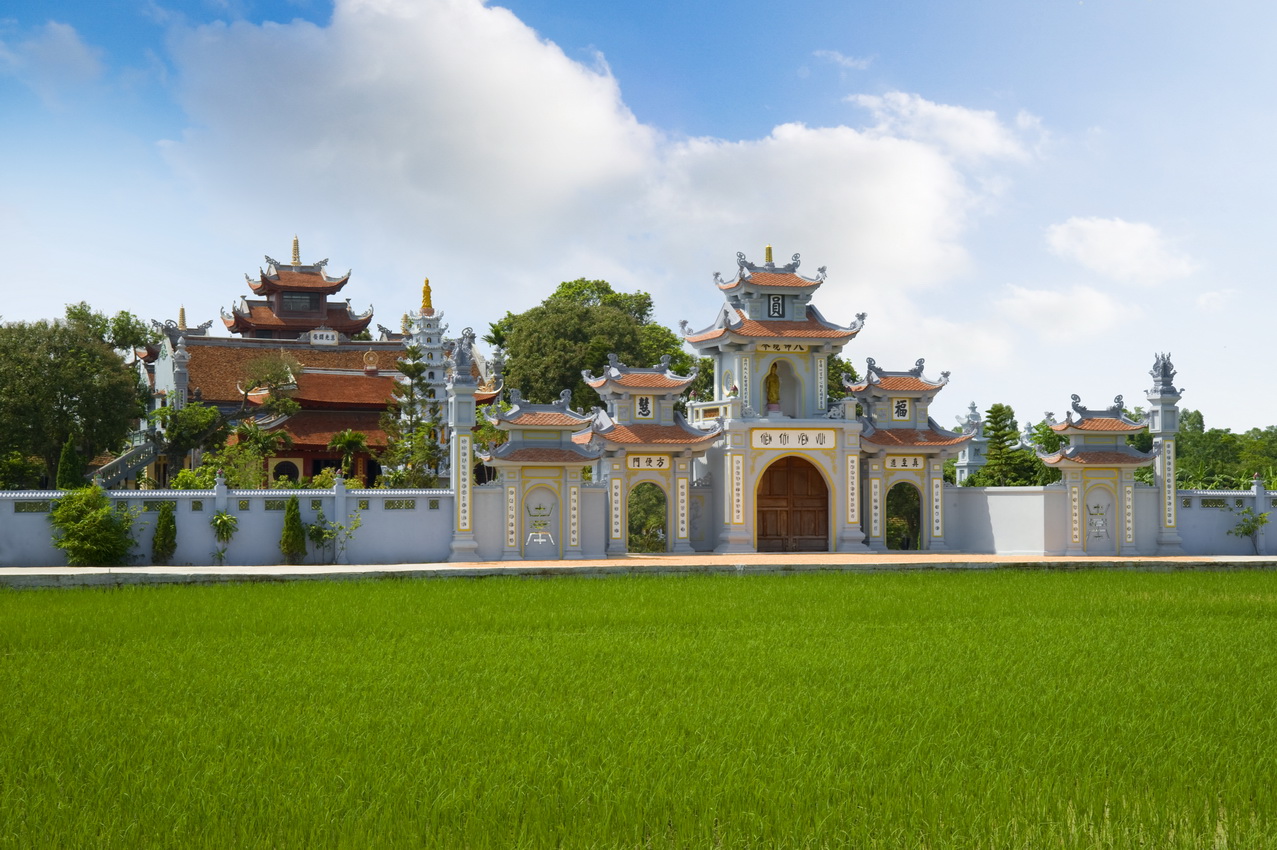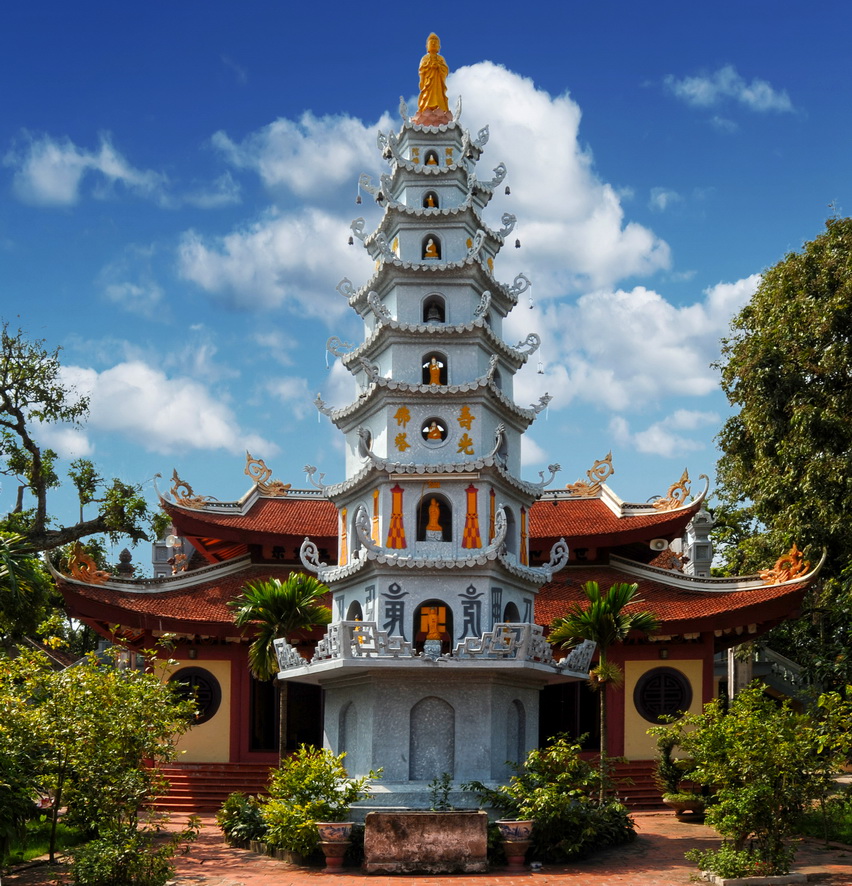Vien Minh Pagoda
Viên Minh Pagoda, also known locally as Chùa Đà Quận, is one of the most historically significant Buddhist temples in Cao Bằng Province, Vietnam. Nestled peacefully in Đà Quận Hamlet, Hưng Đạo Commune, Cao Bằng City, the pagoda is a revered spiritual site and a symbol of local religious tradition that spans centuries.
1. History and Origins
Viên Minh Pagoda was first constructed during the Lý Dynasty (11th–13th centuries), a golden era for the development of Buddhism in Vietnam. As one of the oldest temples in Cao Bằng, it has undergone several restorations over time, particularly during the Nguyễn Dynasty and in more recent years, to preserve its cultural and architectural integrity.
The pagoda has long served as a center of Buddhist teaching and practice for the surrounding community. Local records and oral histories indicate that the temple has been continuously used for over 900 years, making it a vital part of Cao Bằng’s cultural and religious heritage.
2. Architecture and Features
Viên Minh Pagoda follows traditional Vietnamese Buddhist architecture, combining harmony, simplicity, and elegance. Although the current structure includes some modern renovations, many features remain faithful to the original design.
Notable architectural elements:
-
Tam Quan Gate (Three-Entrance Gate): The main entrance of the temple, symbolizing the three paths to enlightenment.
-
Main Worship Hall (Chính điện): Houses statues of Buddha Shakyamuni, Guanyin (Avalokiteshvara), and various Bodhisattvas.
-
Ancient Bell Tower: Features an old bronze bell cast in the 18th century, used to call monks to prayer.
-
Peaceful Courtyard: Surrounded by flowering plants and bonsai trees, creating a tranquil environment for meditation and reflection.
The temple is modest in scale but rich in spiritual atmosphere and historical depth.
3. Spiritual and Cultural Significance
Viên Minh Pagoda is more than just a religious site — it is a community landmark and a symbol of the enduring presence of Buddhism in northern Vietnam. Local people come to the pagoda to:
-
Offer prayers and incense on special Buddhist holidays like Vesak (Phật Đản) and Vu Lan (Ghost Festival)
-
Seek blessings for health, peace, and prosperity
-
Participate in chanting ceremonies and dharma talks
-
Reflect in silence and meditate in the serene surroundings
During the Lunar New Year (Tết), the temple becomes especially lively, as people visit to pray for good fortune in the year ahead.
4. Visiting Information
-
Location: Đà Quận Hamlet, Hưng Đạo Commune, Cao Bằng City, Cao Bằng Province
-
Opening Hours: 6:00 AM – 5:30 PM daily
-
Entrance Fee: Free (donations are appreciated)
-
Best Time to Visit: Early morning or during Buddhist holidays for cultural activities
-
Dress Code: Modest attire is recommended when entering sacred spaces
5. How to Enjoy Your Visit
-
Begin at the Tam Quan Gate, pausing to take in the peaceful ambiance
-
Enter the main hall respectfully and offer incense or a silent prayer
-
Observe the traditional architecture and antique statues inside
-
Stroll through the garden, reflecting or sitting quietly by the lotus ponds
-
Talk with local monks or caretakers if you’re interested in learning about Buddhist practices
Conclusion
Viên Minh Pagoda stands as a quiet guardian of Cao Bằng’s spiritual and cultural past. With its deep historical roots, peaceful setting, and enduring role in the community, the pagoda offers a meaningful stop for travelers seeking both cultural insight and spiritual reflection.



